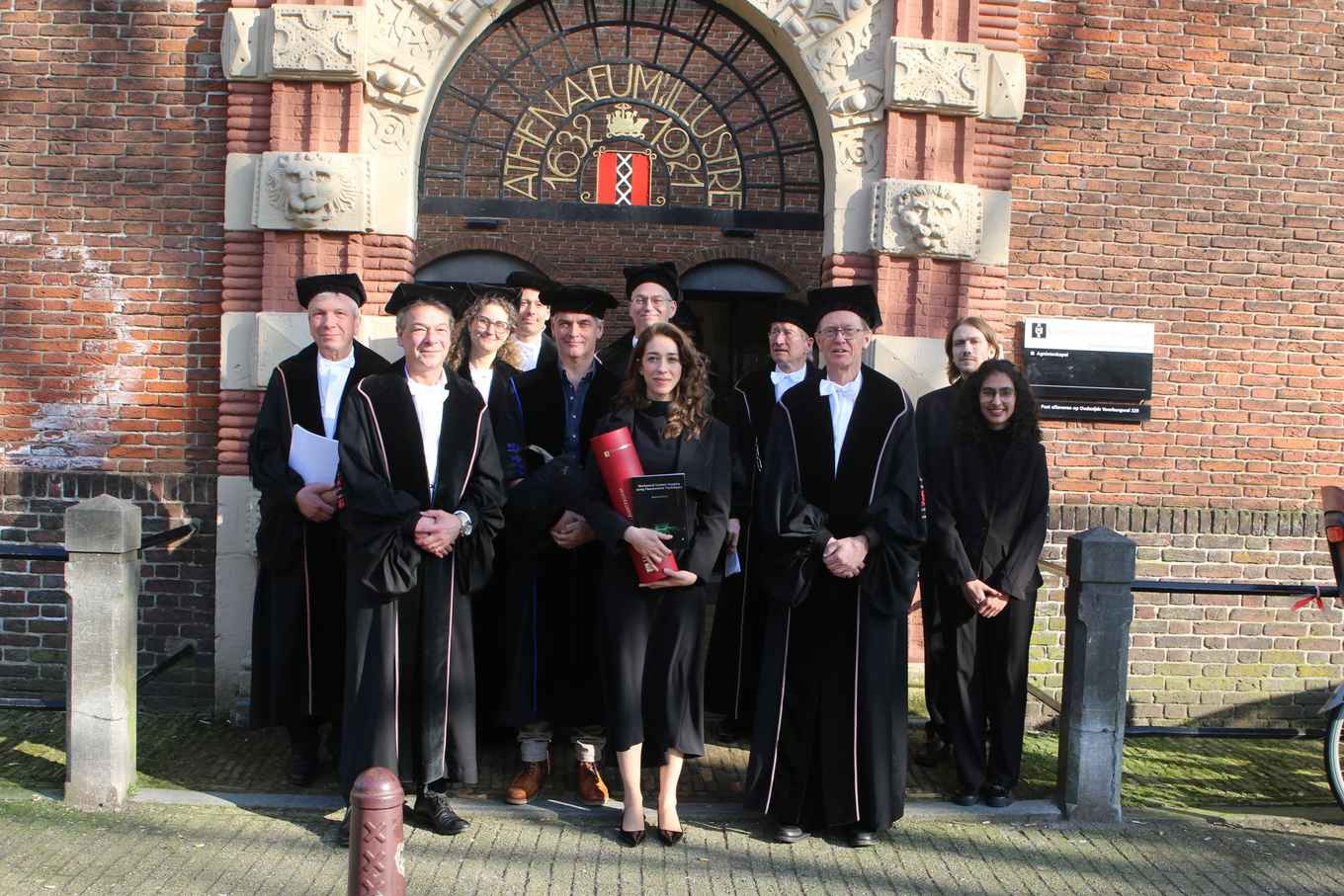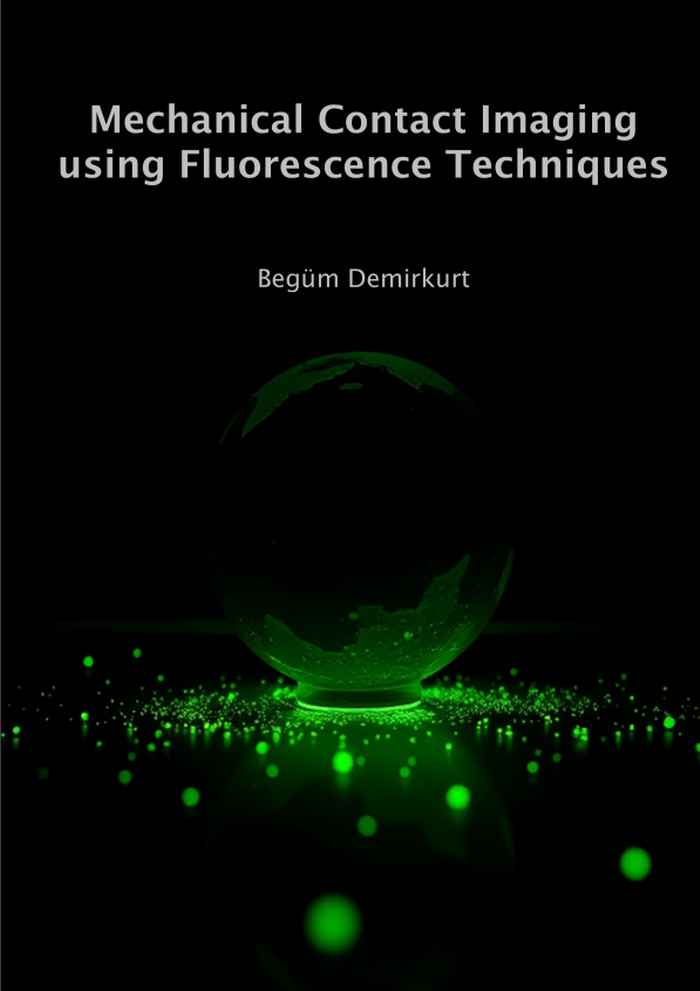Begüm Demirkurt receives Dick Stufkens Prize 2025
Holland Research School of Molecular Chemistry (HRSMC) recognizes outstanding PhD research
17 October 2025

In her thesis, Demirkurt describes the development and use of fluorescence microscopy techniques to visualise, with nanometre resolution, the real contact area between rough surfaces. The method is based on the fluorescence of a rotor molecule and exploits its sensitivity to the viscosity or rigidity of the local microenvironment at the interface.
Selecting the winner, the jury for the Dick Stufkens prize 2025 unanimously decided for Demirkurt. The jury is impressed by the quality of her research and the width of her approach, combining molecular sensing and contact mechanics. The jury particularly appreciates the depth of her understanding, as appears from her bright discussions of the scientific results.
The thesis of Demirkurt reveals her skills in surface chemistry, optical spectroscopy and microscopy, atomic-force microscopy, surface profilometry, and computer modelling of surface structure using contact-mechanics software. In her hands, the combination of results from these diverse fields made for a highly successful research project. Adding to this, her thesis is well written, and the instructive schemes and clear figures testify to her great presentation skills. Begüm Demirkurt is a versatile scientist who fully deserves the Dick Stufkens Prize.

Thesis: Mechanical contact imaging with high resolution
At the heart of Demirkurt’s experimental research is a sensor consisting of a monolayer of fluorescent molecular-rotor molecules that are covalently linked to a silane functionalized glass cover slip. A glass or polymer sphere, glued to the head of a rheometer, is then pressed onto the glass cover slip by applying a controlled normal force. At the same time, the contact interface is imaged from below using a fluorescence microscope. While the fluorescence is weak in the absence of mechanical contact, it strongly increases when the probe molecules become confined. This thus enables imaging of the actual contact area in unprecedented detail.

In her thesis, Demirkurt explores the resolution that can be achieved using the described fluorescence imaging setup. She studies the photophysics of the rotor molecule in great detail to obtain a fundamental understanding of its fluorescence behaviour in diverse environments.
In the first part of her thesis, Demirkurt reports an ingenious method to turn the sensor into a single-molecule detector. Prolonged irradiation of the monolayer with intense continuous-wave laser light at 488 nm turns a large part of the fluorescent molecules into a dark state, only leaving a set of blinking molecules that can be observed one by one. This blinking phenomenon enables imaging the contact interface with a resolution of just under 60 nm, allowing the study of both soft (plastics) and hard (glass) contacts. This impressive resolution turns out to be instrumental for determining the real contact area of the glass sphere, as the contact is restricted to the discrete, nanoscopic irregularities of the rough surface. This highlight of Demirkurt’s research was published in ‘The Journal of Physical Chemistry Letters’, a prestigious journal in her field.
Following this unique result, Demirkurt presents a broad range of mechanistic studies, which aim at the understanding of the fluorescence characteristics of the rotor molecule at ensemble and single-molecule levels, across a variety of contact interfaces and solid-state environments. She concludes that most likely the photogenerated dark intermediate is a radical anion, which returns to the fluorescent neutral state by charge recombination. In a beautiful series of time-resolved experiments, Demirkurt shows the dependence of the blinking dynamics on the dielectric properties of the interface, the molecular confinement and the rotor density in the monolayer. This insight into the behaviour of the molecular rotor in diverse environments is essential to further refining the super-resolution technique. Subsequently, she applies this technique to study the effect of surface roughness on contacts and friction between two hard glass objects, taking the resolution down to 30 nm.
In the last chapter of her thesis, Demirkurt reports the sensitivity of the rotor-on-glass sensor in contact detection at the interfaces of soft polymers and hard glass. The study shows that the sensor primarily responds to changes in free volume, and much less to the pressure inside a contact. High- pressure experiments with the contact liquid DMSO point to the presence of a thin DMSO layer in the interface that most probably solidifies, thereby reducing the sensitivity of the sensor to pressure changes. This observation underscores that the rotor-on-glass sensor is best suited as on/off contact detector.
The thesis can be accessed in detail at the UvA Digital Academic Repository.